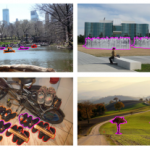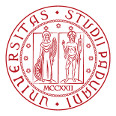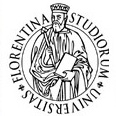 Our paper “Copy-Move Forgery Detection and Localization by Means of Robust Clustering with J-Linkage” by I. Amerini, L. Ballan, R. Caldelli, A. Del Bimbo, L. Del Tongo, and G. Serra, has been accepted for publication by the Signal Processing: Image Communication journal (pdf, link); more info on this page.
Our paper “Copy-Move Forgery Detection and Localization by Means of Robust Clustering with J-Linkage” by I. Amerini, L. Ballan, R. Caldelli, A. Del Bimbo, L. Del Tongo, and G. Serra, has been accepted for publication by the Signal Processing: Image Communication journal (pdf, link); more info on this page.
Understanding if a digital image is authentic or not, is a key purpose of image forensics. There are several different tampering attacks but, surely, one of the most common and immediate one is copy-move. A recent and effective approach for detecting copy-move forgeries is to use local visual features such as SIFT. Often, this procedure could be unsatisfactory, in particular in those cases in which the copied patch contains pixels that are spatially distant, and when the pasted area is near to the original source. In such cases, a better estimation of the cloned area is necessary in order to obtain an accurate forgery localization. We present a novel approach for copy-move forgery detection and localization based on J-Linkage which performs a robust clustering in the space of the geometric transformation.

I am involved in the technical program committee of the 1st International Workshop on Computer Vision Methods in Blind Image Forensics (CVBIF), in conjunction with ICCV 2011.
The verification of original images, as well as the detection of manipulations in digital images and multimedia content has become an increasingly important topic. The purpose of this workshop is to bring together leading experts from image forensics and the computer vision community. Its goal is to foster new vision-based approaches to image forensics problems and thus promote the advancement of vision-based solutions in forensics applications. Download a PDF version of the call for papers here!

The paper “A SIFT-based forensic method for copy-move attack detection and transformation recovery” by I. Amerini, L. Ballan, R. Caldelli, A. Del Bimbo, and G. Serra is now officially accepted for publication by the IEEE Transactions on Information Forensics and Security.
One of the principal problems in image forensics is determining if a particular image is authentic or not. This can be a crucial task when images are used as basic evidence to influence judgment like, for example, in a court of law. To carry out such forensic analysis, various technological instruments have been developed in the literature.
In this paper the problem of detecting if an image has been forged is investigated; in particular, attention has been paid to the case in which an area of an image is copied and then pasted onto another zone to create a duplication or to cancel something that was awkward. Generally, to adapt the image patch to the new context a geometric transformation is needed. To detect such modifications, a novel methodology based on Scale Invariant Features Transform (SIFT) is proposed. Such a method allows both to understand if a copy-move attack has occurred and, furthermore, to recover the geometric transformation used to perform cloning. Extensive experimental results are presented to confirm that the technique is able to precisely individuate the altered area and, in addition, to estimate the geometric transformation parameters with high reliability. The method also deals with multiple cloning.
More information about this project (there are also links to datasets used in the experiments) are available on this page.
 Our paper “Copy-Move Forgery Detection and Localization by Means of Robust Clustering with J-Linkage” by I. Amerini, L. Ballan, R. Caldelli, A. Del Bimbo, L. Del Tongo, and G. Serra, has been accepted for publication by the Signal Processing: Image Communication journal (pdf, link); more info on this page.
Our paper “Copy-Move Forgery Detection and Localization by Means of Robust Clustering with J-Linkage” by I. Amerini, L. Ballan, R. Caldelli, A. Del Bimbo, L. Del Tongo, and G. Serra, has been accepted for publication by the Signal Processing: Image Communication journal (pdf, link); more info on this page.




